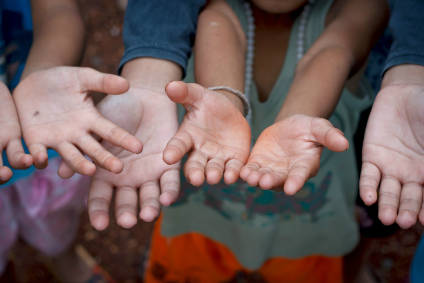
A study by Verisk Maplecroft found that almost a quarter of countries across the world have witnessed a significant deterioration in the company’s Modern Slavery Index since 2016 and Turkey, which has grown in popularity for garment manufacturing due to its proximity to Europe is now listed as high risk. In addition, the subnational version of the Index reveals that two-thirds of the global population now live in high or extreme risk states or provinces.
The report by Verisk Maplecroft helps to show why and where these risks are manifesting. It has found that climate change is now a factor, alongside rising poverty levels. And the report predicts the chances of goods produced using forced labour entering supply chains are only likely to worsen due to these issues, despite new and upcoming legislation in the US and EU to eradicate the practice.
“Regulators, investors, shareholders and consumers are all becoming acutely aware of the modern slavery risks that have been evident for years to NGOs, activists and exploited people,” says Verisk Maplecroft’s director of human rights Dr James Sinclair. “But with data from the ILO showing that 50 million people are trapped in modern slavery globally, the problem is getting worse, not better, meaning that organisations need to work harder to keep goods tainted by forced labour out of their supply chain.”
The European Commission’s newly unveiled plan to ban products made with forced labour from entering the EU market is the latest in a growing list of human rights due diligence laws. If it comes into force, the ban will join the United States’ Uyghur Forced Labor Prevention Act (UFLPA) in attempting to eradicate forced labour from global supply chains.
According to the report, poverty has long been a key determining factor in the prevalence of modern slavery. Households lacking economic security are more likely to become dependent on employment agents within the informal economy, which can lead to exploitation. This is reflected in the data: 17 of the 24 extreme risk countries on the latest edition of the MSI are low and lower-middle income economies. This group includes Myanmar and Pakistan, two leading exporters of goods including clothing and cotton fabric.
But workers in developed economies aren’t immune to exploitation. The report found that the number of high and upper-middle income economies rated high or extreme risk on the MSI has risen to 44, up from 39 when the dataset launched in 2016.

US Tariffs are shifting - will you react or anticipate?
Don’t let policy changes catch you off guard. Stay proactive with real-time data and expert analysis.
By GlobalDataSeveral higher income economies feature among those that have seen the largest increase in risk in that time, including Turkey, which has plummeted 46 places in the index to 62nd most at-risk country.
The country is now within the Index’s high risk category, triggered by an increase in reported cases of forced labour involving Syrian migrants, including children, within the garment industry and the agricultural sector.
Also featured in the report is China – the largest sourcing country. Ranked 18th, China is rated ‘extreme risk’ due to reports of human rights violations in Xinjiang. However, China’s commanding position within several industries means eradicating its abuses from global supply chains is easier said than done, the report suggests.
“The factors driving the negative global trend in modern slavery risk are set to worsen in the coming years,” the report reads. “Rising inflation and fears of a global recession suggest the world is headed for a period of prolonged economic instability which will leave millions more people vulnerable to exploitation. At the same time, even the most optimistic warming scenarios suggest that climate-driven migration will ramp up by mid-century.
“This, combined with the expansion of the regulatory landscape governing forced labour, presents a growing dilemma for companies that had traditionally relied on sourcing low-cost labour abroad.”



